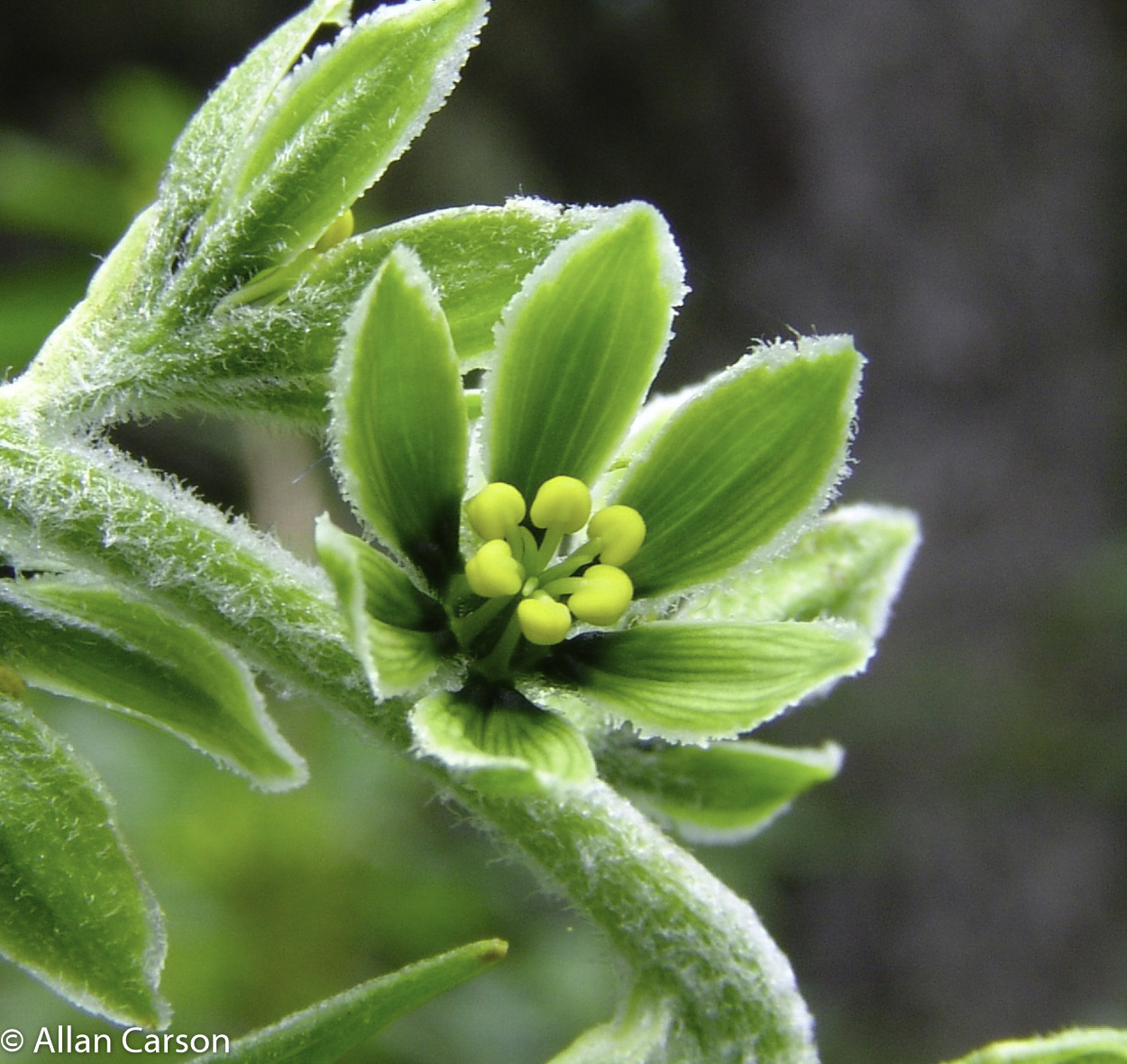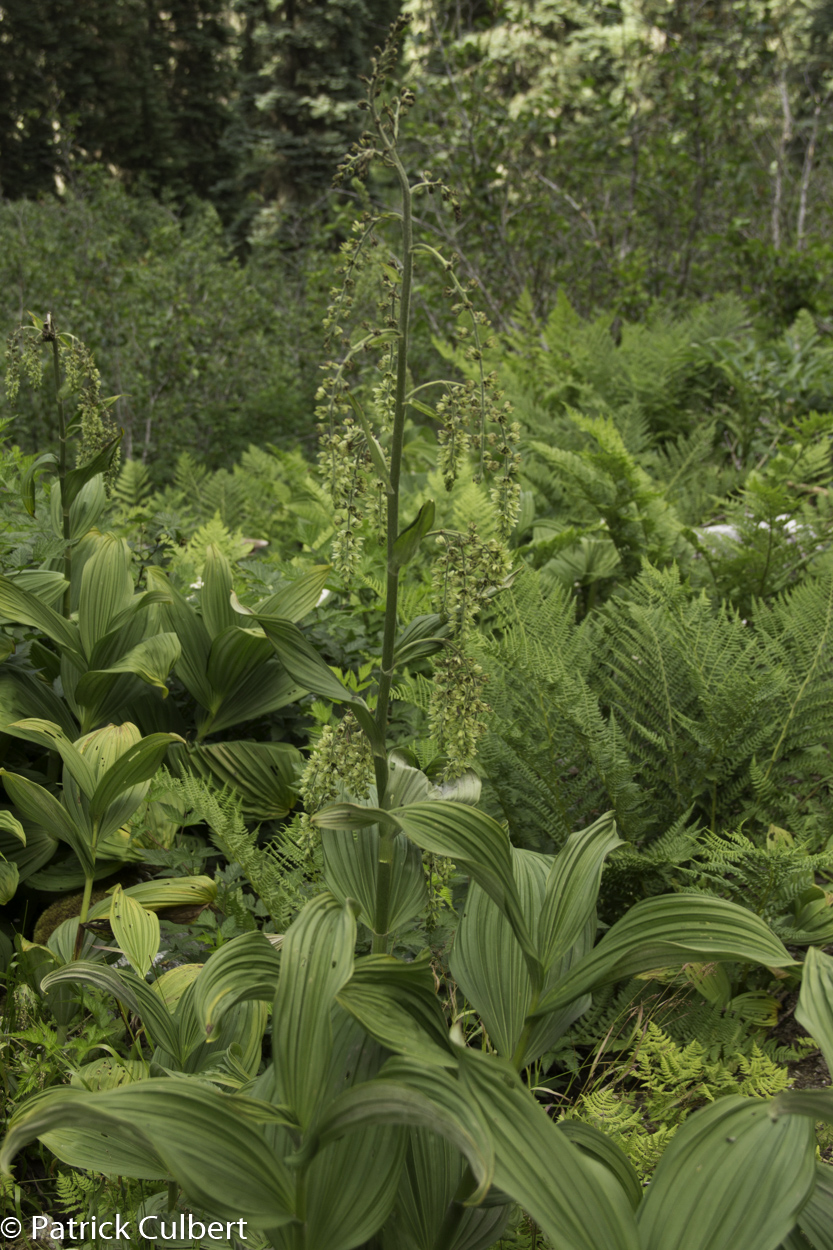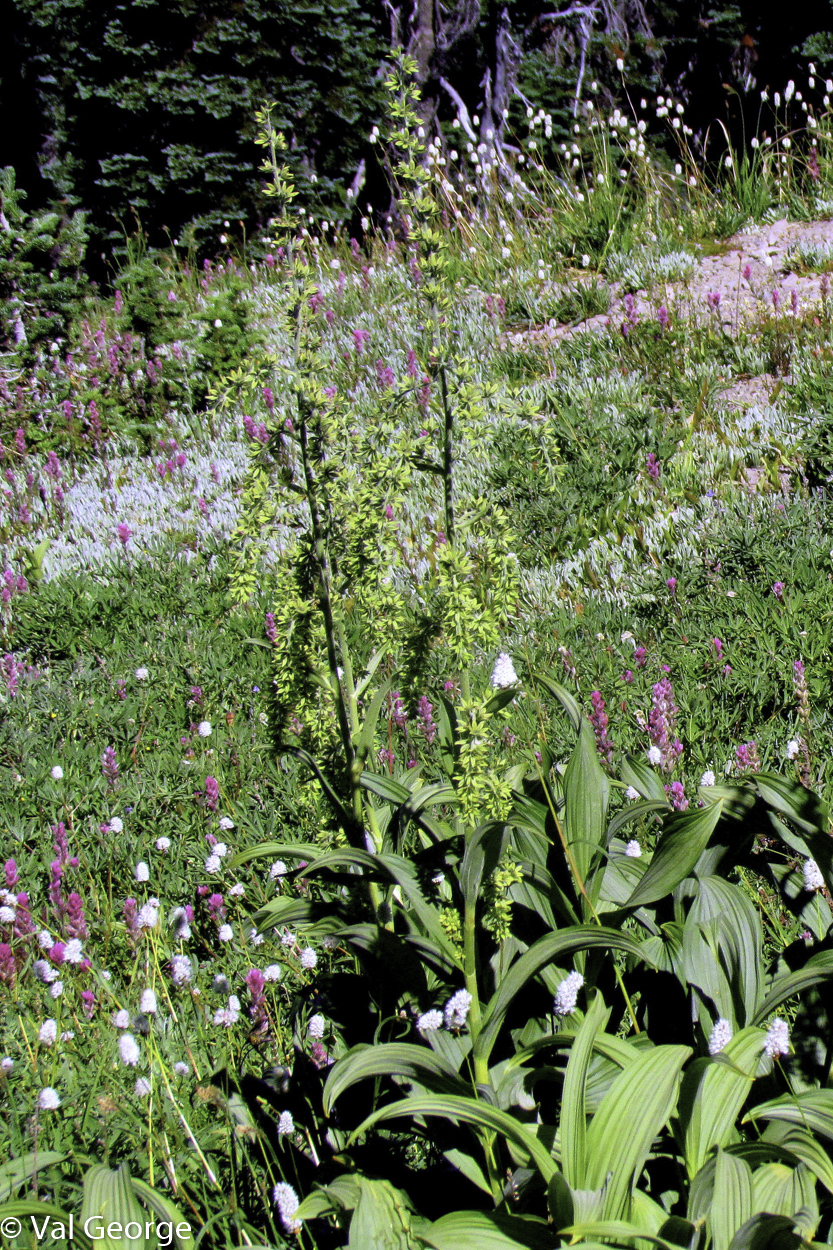Veratrum viride – Indian hellebore
Common Name
Indian hellebore
Family
Melanthiaceae
Scientific Name
Veratrum viride
Soil Moisture Regime (SMR)
- Wet (W)
Soil Nutrient Regime (SNR)
- Rich (R)
Video link
Hitchcock, C. Leo, and Arthur Cronquist. Flora of the Pacific Northwest: An Illustrated Manual © 1973. Reprinted with permission of the University of Washington Press.
General / Habitat
- Tall, robust perennial herb
- Grows in wet thickets, meadows, and open forests.
- Most common at subalpine elevations in late snowmelt patches, but can be found at all elevations
Key Identifying Characteristics
- Form: 0.7-2 m tall, stems robust and unbranched, hairy throughout
- Leaves: Spirally arranged, large, broad, oblong, tip pointed, clasping at base, prominently ribbed, hairy beneath
- Flowers: Pale-green with dark green centres, numerous in branched, drooping terminal clusters
- Fruit: Capsules containing winged seeds
- Other: Extremely toxic – do not consume any parts of the plant, even drinking water in which hellebore is growing may cause stomach cramps
Lookalikes
- Other leafy lilies when young (Maianthemum , Streptopus )
- Look for hairs
Interesting Characteristics
- Revered but used sparingly by many coastal peoples for its powerful medicinal properties
External References
Sources
Douglas, G.W. et al (Editors). 1998-2002. Illustrated Flora of British Columbia, Volumes 1 to 8. B.C. Min. Environ., Lands and Parks, and B.C. Min. For., Victoria, B.C.
Pojar, J. and A. MacKinnon. 2014. Plants of Coastal British Columbia Including Washington, Oregon & Alaska. B.C. Ministry of Forestry and Lone Pine Publishing. Vancouver, B.C.







